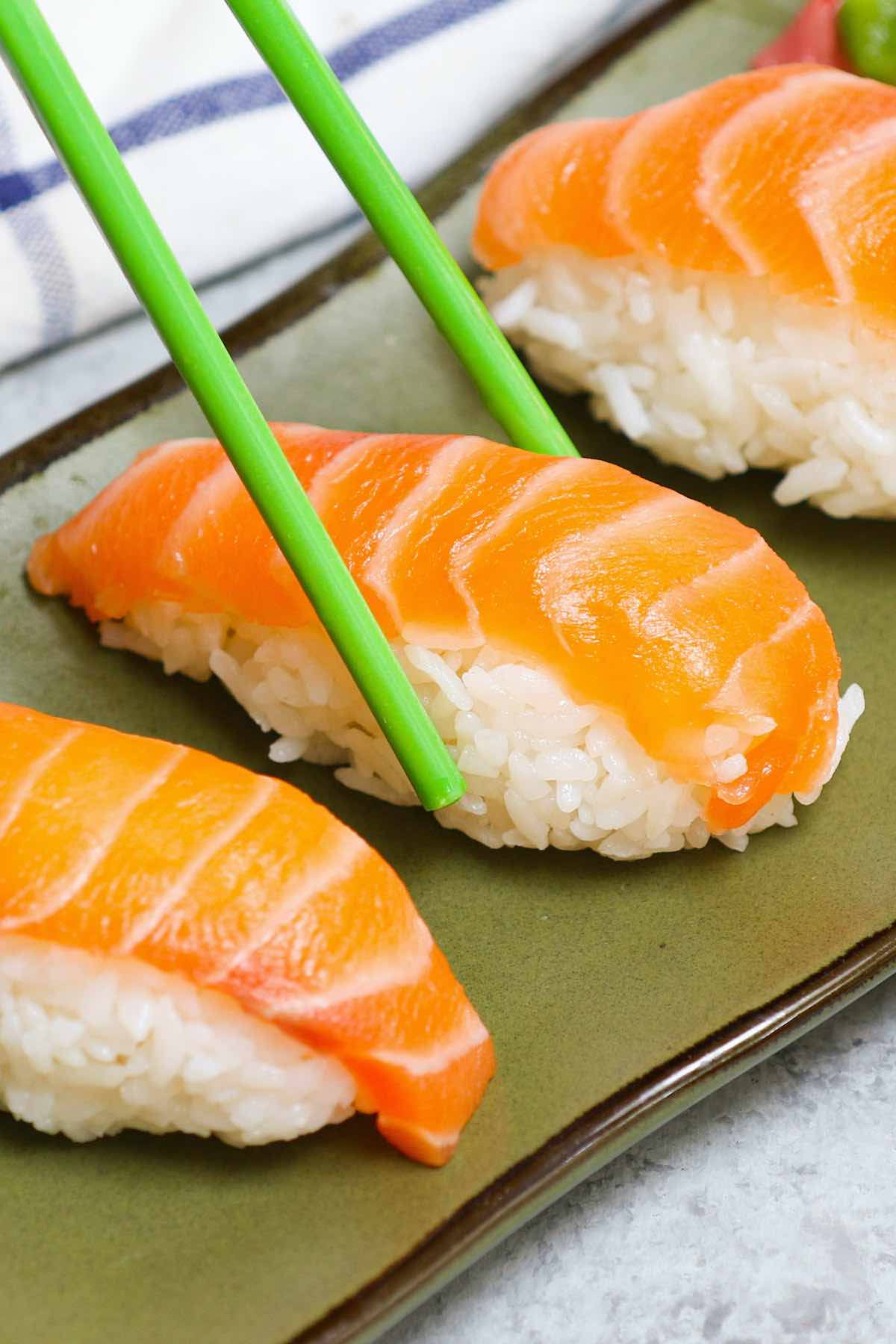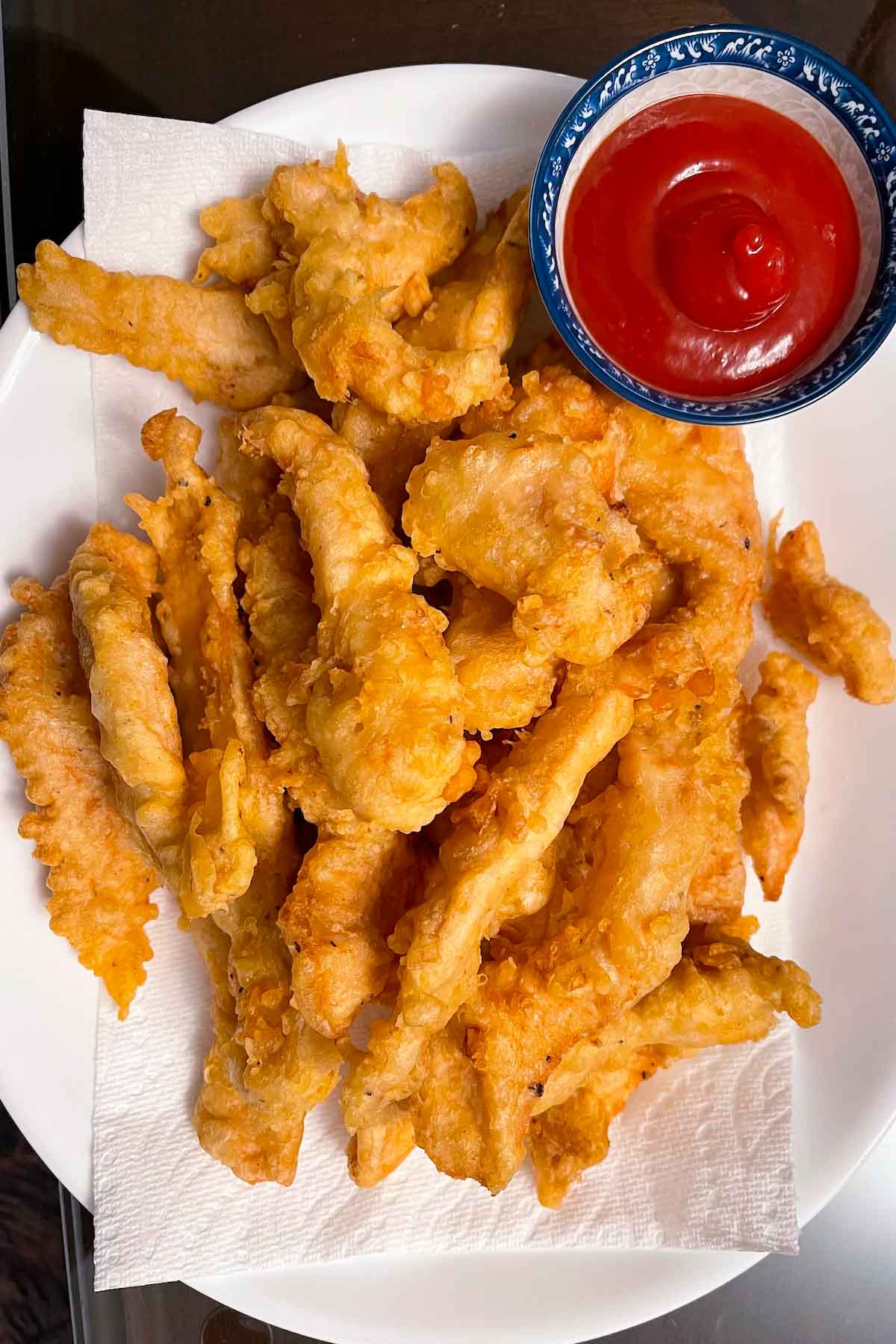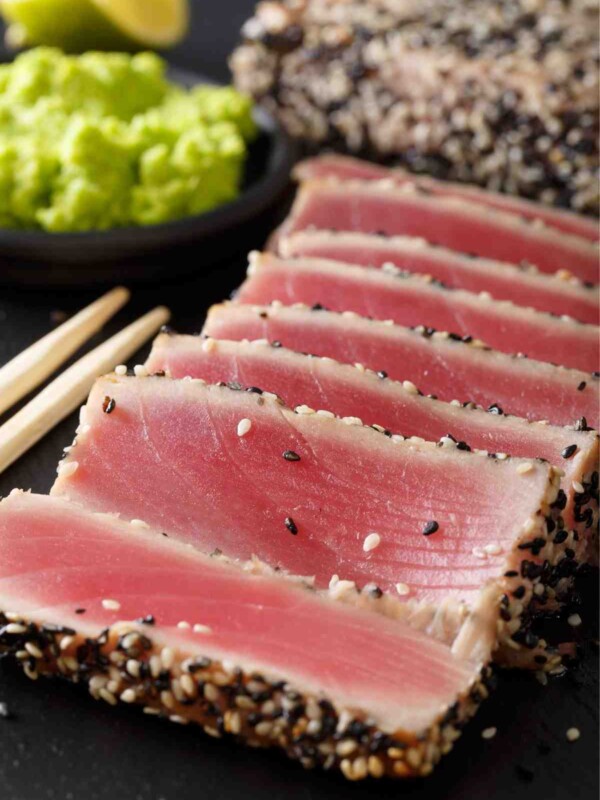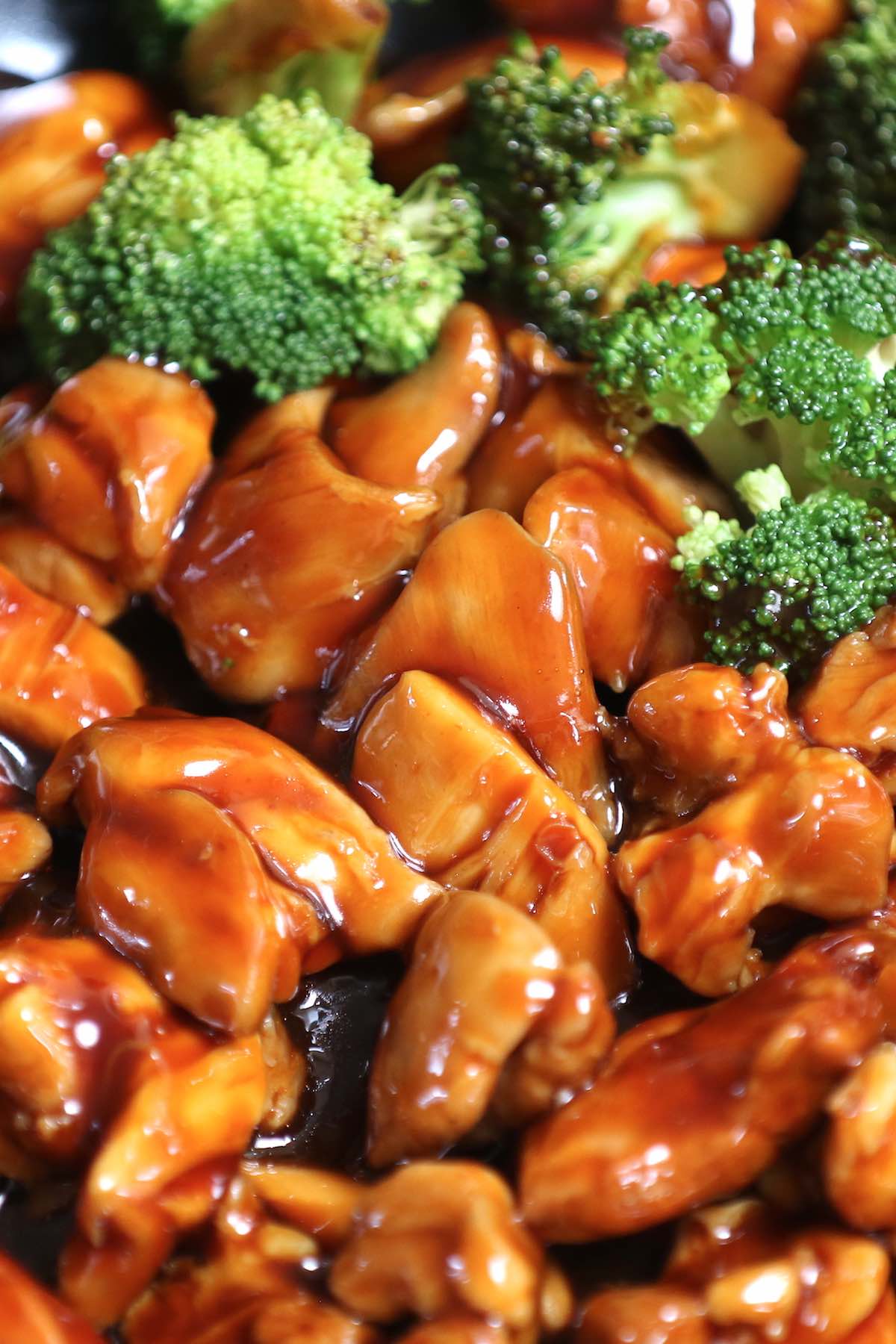Yellowtail Sashimi (How to Make Hamachi Sashimi)
on Dec 09, 2020, Updated Nov 19, 2023
This post may contain affiliate links. Please read my disclosure policy.
Yellowtail Sashimi made with delicious and buttery Hamachi fish! It’s so much cheaper than the Japanese restaurants, and incredibly easy to make at home. I’ll share with you how to cut yellowtail for sashimi, and make both the traditional and Nobu new style sashimi.
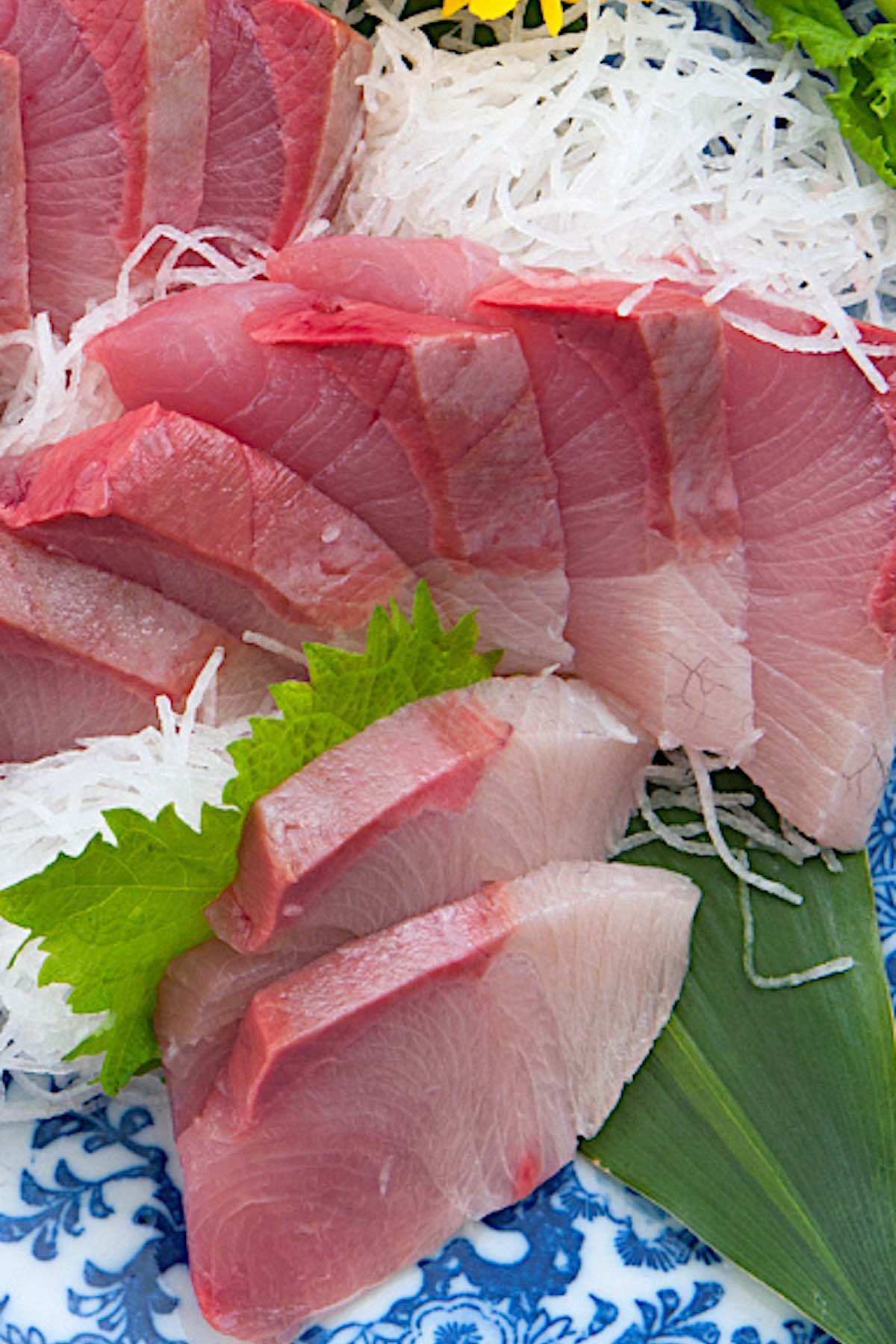
When it comes to Japanese sashimi, Salmon Sashimi, Tuna Sashimi, Swordfish Sashimi, and this melt-in-your-mouth yellowtail Hamachi sashimi are my favorites.
I like the traditional way to eat yellowtail sashimi by dipping the raw fish into soy sauce infused with wasabi. Recently I also discovered the Nobu style sashimi, where the raw fish is gently “cooked” when the hot oil and sauce are poured on top. If you don’t like the idea of eating raw fish, you can definitely try this method. I’ll show you how to make both traditional and nobu style sashimi in this post.
Ingredients You’ll Need
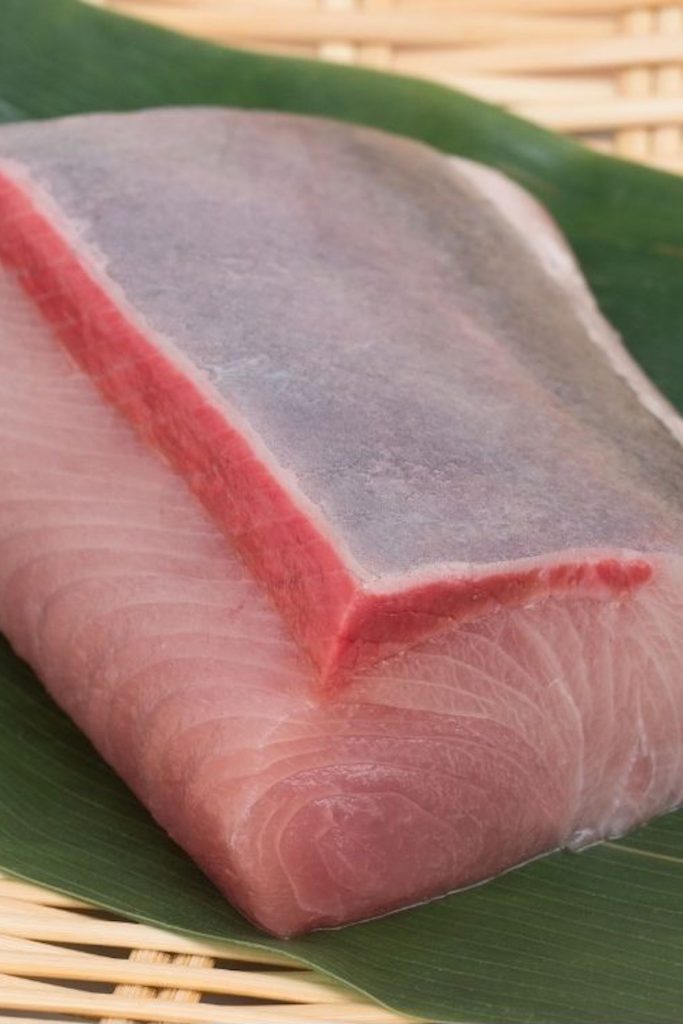
- Yellowtail Fish: It’s important to buy sashimi-grade Hamachi fish for this recipe. Hamachi has a high oil content which gives the fish a very smooth texture. Fresh Hamachi should have a light sea smell and no odor at all.
- Wasabi and Soy Sauce for Traditional Sashimi: Wasabi helps bring out the flavor and can kill microbes in the fish. Soy sauce adds another rich flavor to the dish. You can also decorate with optional daikon radish, shiso leaf, and salmon roe.
- For Nobu Style Sashimi: You’ll need oil, soy sauce, ginger, garlic, and jalapeño.
Tools You’ll Need: the Right Knife
You’ll need a sharp knife to cut the fish properly and easily. There are two kinds of knives that are great for cutting fish for sashimi: the slicer (Sujihiki) and the multi-purpose chef’s knife (Gyuto).
How to Make Classic Yellowtail Sashimi
Step 1: Slice the yellowtail fish
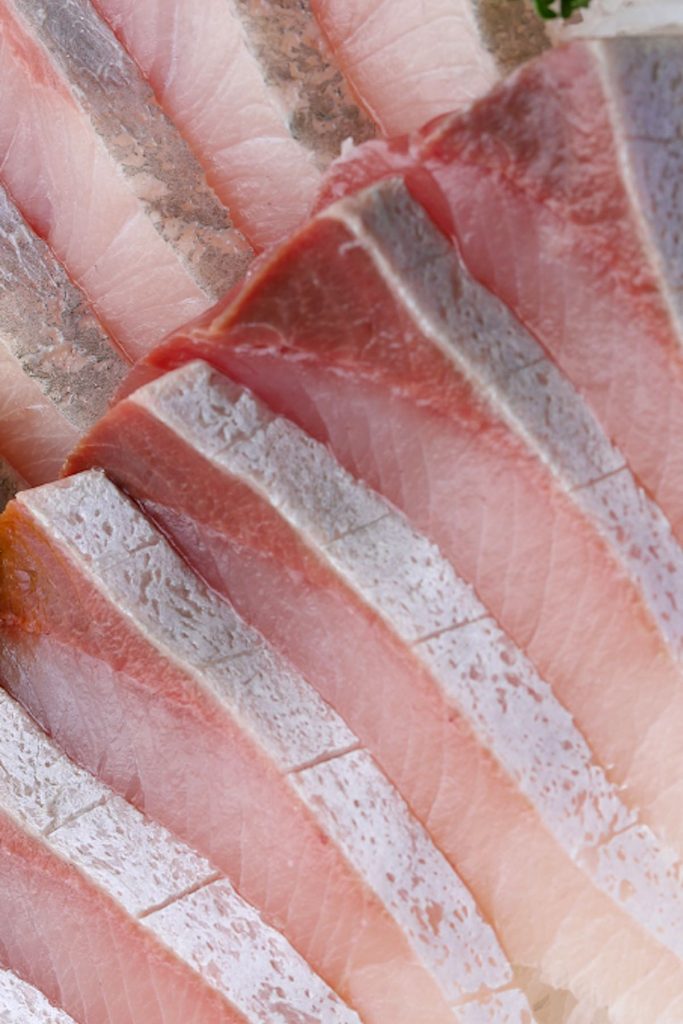
For making sashimi dish, there are two slicing techniques you can use. You can slice the fish straight down to form relatively thicker pieces. This is called hirazukuri, which is usually used in making traditional yellowtail sashimi.
Alternatively, you can cut at an angle to form thinner slices. This is called usuzukuri, which can be used in making both traditional and nobu-style sashimi. You can adjust the angle to get the proper length and thickness.
Step 2: Make traditional yellowtail sashimi
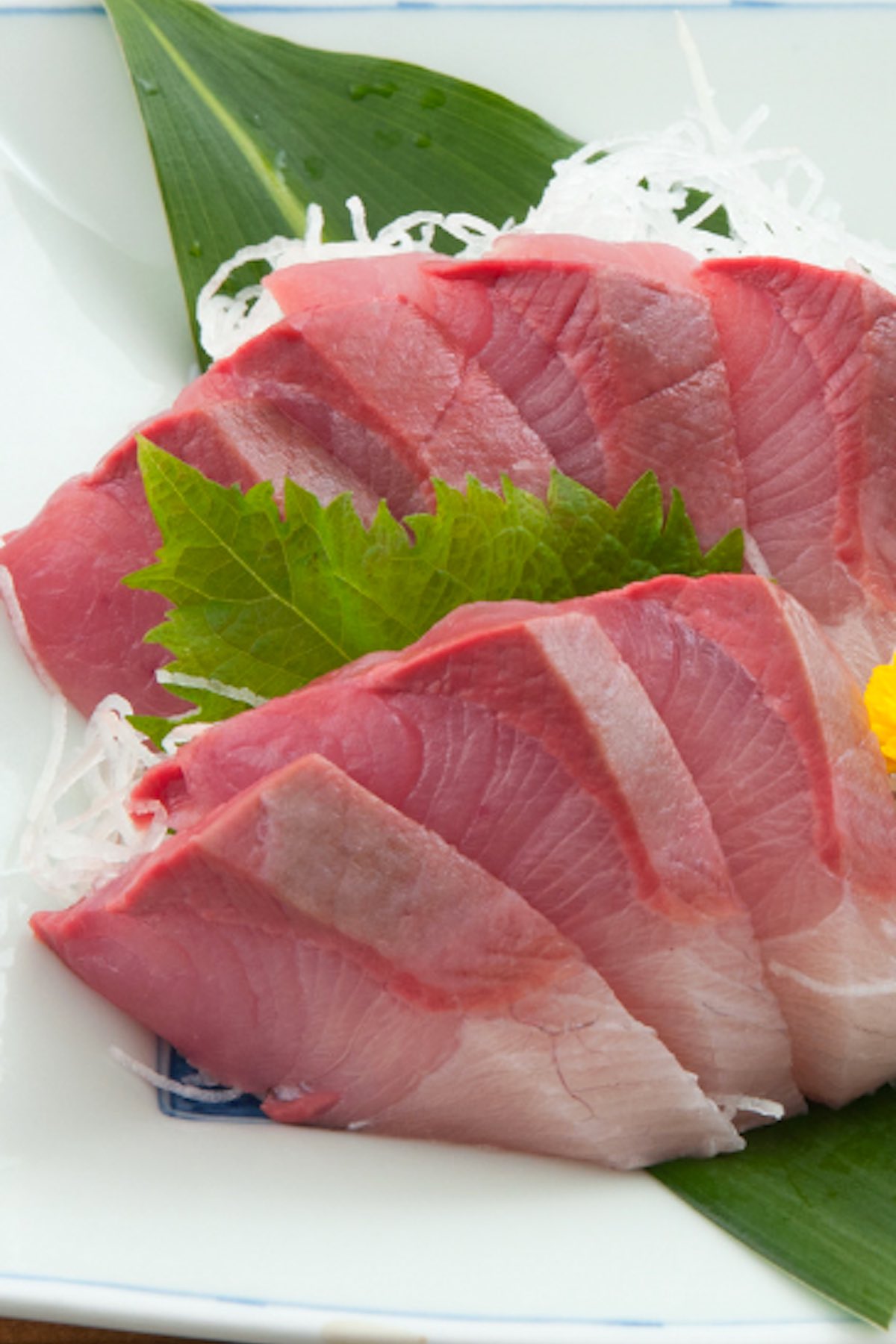
Arrange sliced yellowtail pieces together with optional daikon radish, shiso leaf, salmon roe, pickled ginger, and wasabi on the place. Serve with soy sauce and enjoy!
Nobu Style Yellowtail Sashimi
If you are a fan of Nobu style, I’ll show you how to make this into Nobuyuki yellowtail sashimi. For those who don’t know, Nobu (Nobuyuki Matsuhisa) is a Japanese celebrity chef who is known for blending Japanese dishes with Peruvian ingredients.
To make Nobu new style sashimi, you’ll need to cut the fish into paper-thin slices, and then lay them flat on the plate, overlapping as little as possible. Add sliced jalapeno on top. Then in a saucepan over medium heat, add olive oil, sesame oil, minced garlic, and soy sauce. Bring to a boil and pour the sauce over the yellowtail sashimi. The hot sauce will “cook” the fish slightly, making a unique dish that’s completely memorable!
Tips for the Best Yellowtail Hamachi Sashimi
- Use sashimi-grade yellowtail for the best results. Make sure to remove the skin first and cut the filet against the grain into the right thickness.
- It’s best to lubricate the knife before slicing by dipping the tip of the knife into the water.
- If you make nobu-style sashimi, make sure to slice the fish into very thin pieces, and arrange them on a plate with minimum overlapping.
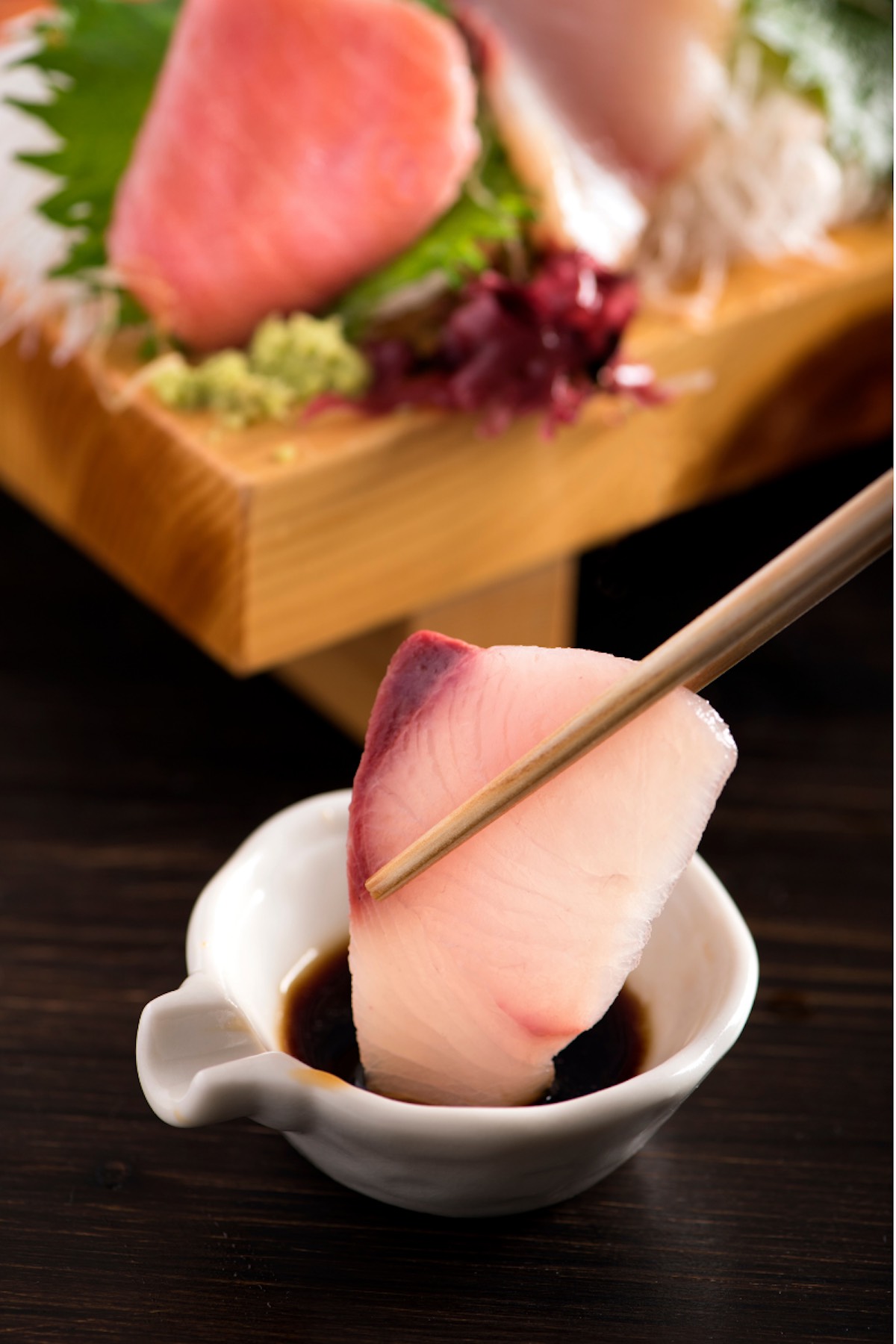
Frequently Asked Questions
What is Yellowtail Sashimi?
Also called Hamachi sashimi, yellowtail sashimi is a Japanese delicacy consisting of fresh raw hamachi fish sliced into thin pieces. It’s served without rice, and often eaten with wasabi and soy sauce.
What Does Yellowtail Sashimi Taste Like?
Yellowtail sashimi tastes smooth and buttery. When eaten with soy sauce and wasabi, it has a desirable bold flavor with a savory and spicy flavor.
What is the Best Yellowtail Fish for Sashimi?
This recipe calls for raw yellowtail Hamachi, and you’ll need to buy sashimi-grade fish. The yellowtail is a great option for sashimi with its high fat content and oily texture. Buy the belly of this fish if you can as it tastes the best. Usually you can find it at your local Japanese grocery stores or large supermarket. It can be fresh or frozen. Place the fish on ice before cooking, and it’s best to eat it the same day.
Is Yellowtail A Tuna?
No, yellowtail fish is not tuna, as many people think. It refers to Japanese amberjack, a delicious fish that lives between Japan and Hawaii.
What’s the Difference Between Sashimi, Nigiri, and Sushi?
Sashimi refers to just slices of raw fish, often served over shredded daikon radish, and it doesn’t have rice. While nigiri is a type of sushi, which consists of raw fish sliced served over pressed vinegar rice.
How Many Calories in Yellowtail Sashimi?
A 1-oz serving of yellowtail sashimi has about 28 calories.
What to Serve with Yellowtail Sashimi?
Yellowtail sashimi is often served with soy sauce and wasabi paste. For the nobu-style sashimi, the raw fish is often topped with jalapeno, other sliced chilies, grated fresh garlic and ginger.
If You Love This Recipe Try out These Japanese Recipes:
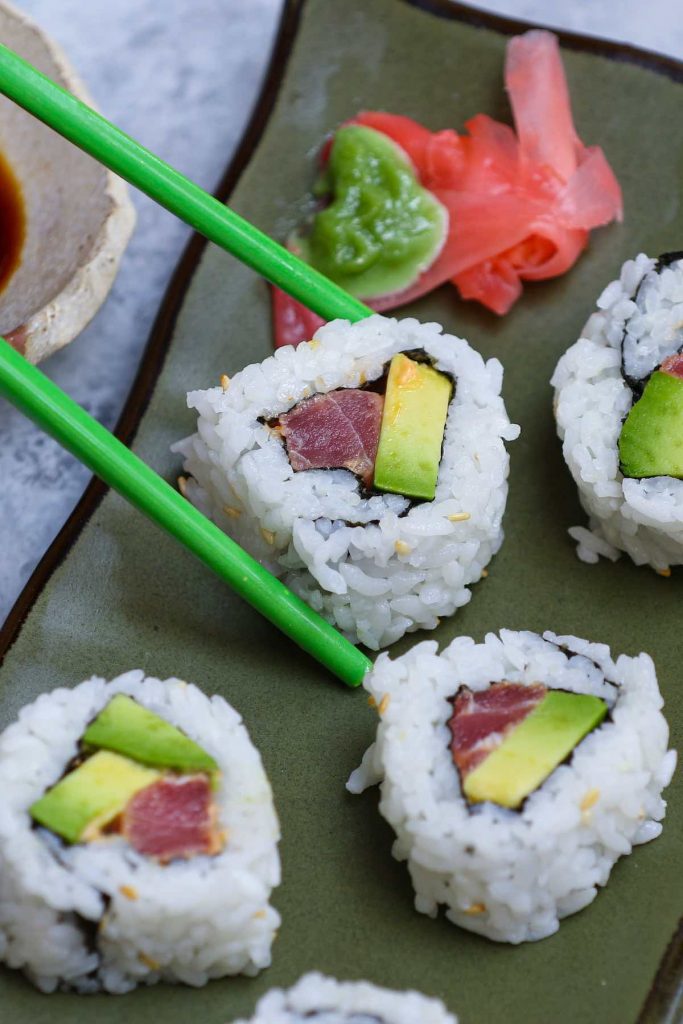

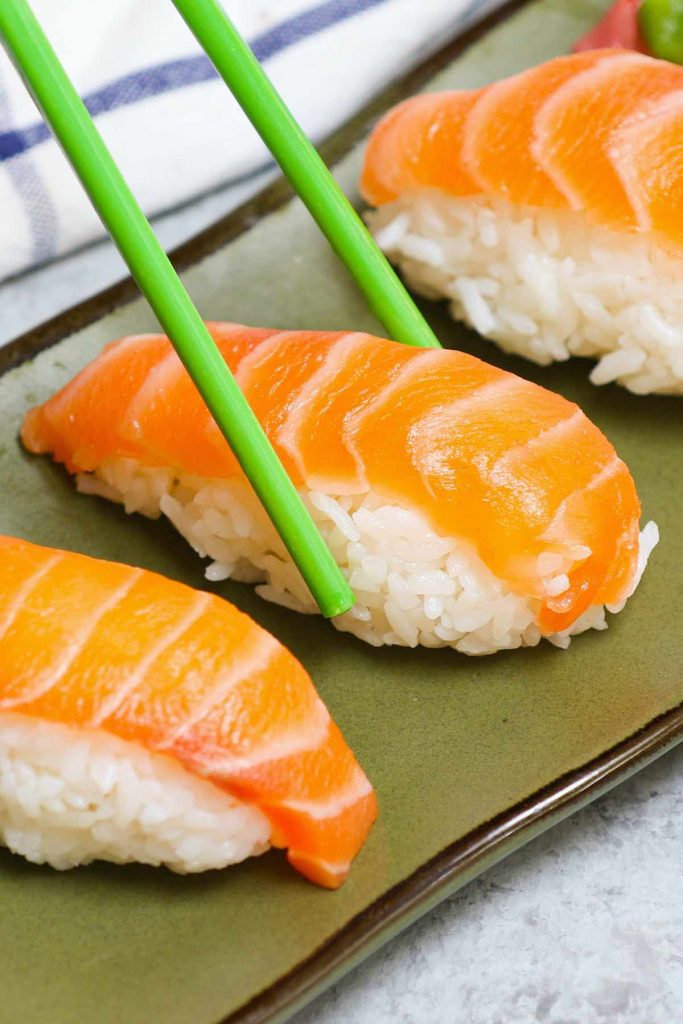
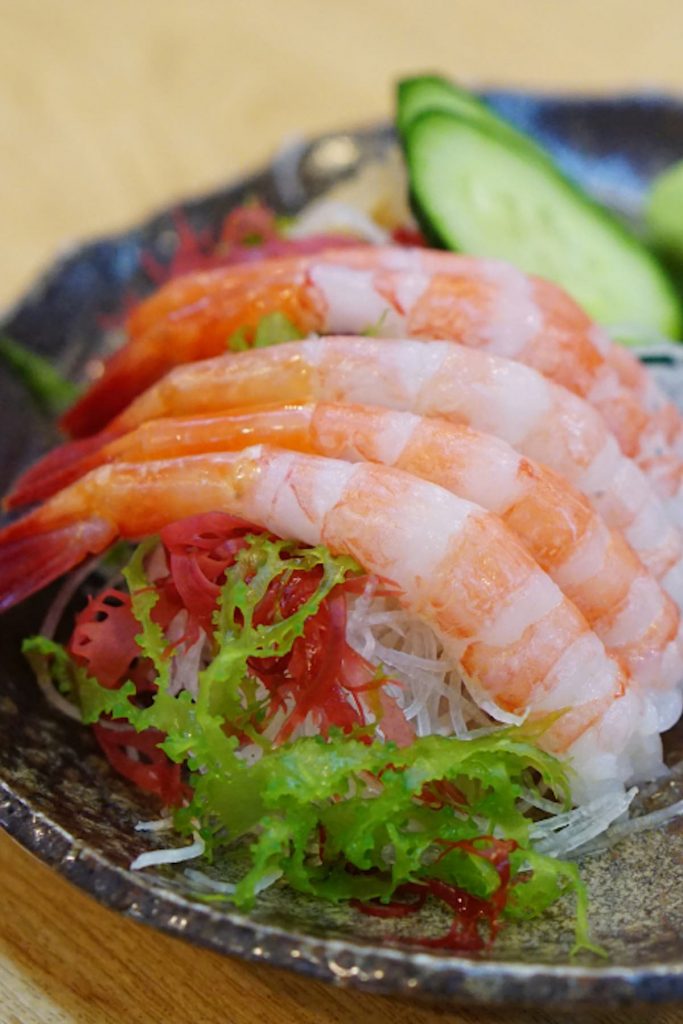
I hope you like this recipe. If you try it, please comment below and let me know how your Yellowtail Sashimi turns out!
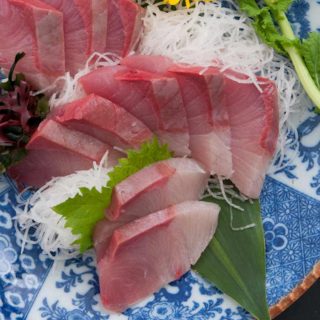
Yellowtail Sashimi Recipe
Ingredients
- 4 oz sashimi-grade yellowtail, belly of the fish if possible
Instructions
- Slice the Fish: Cut the raw yellowtail fish against the grain. You can cut it straight down or at an angle. You can adjust the angle to get the proper length and thickness.
- Arrange Yellowtail Sashimi: On a cold plate, add the optional shredded daikon.
- Layout yellowtail sashimi slices, together with optional wasabi, pickled ginger, and other ingredients.
- Serve with soy sauce and enjoy!
Notes
- It’s best to eat yellowtail sashimi the same day, as the raw fish won’t taste as fresh the next day.
- To make nobu-style sashimi: Slice the fish into paper-thin pieces, and place on a plate. Place sliced jalapeno on top of each piece. Then in a saucepan over medium heat, add 1 tablespoon olive oil, ½ teaspoon minced garlic, ½ teaspoon minced ginger. Bring to a boil and pour the sauce over the sashimi.
Nutrition
Nutrition information provided is an estimate only and will vary based on ingredient brands and cooking methods used.
